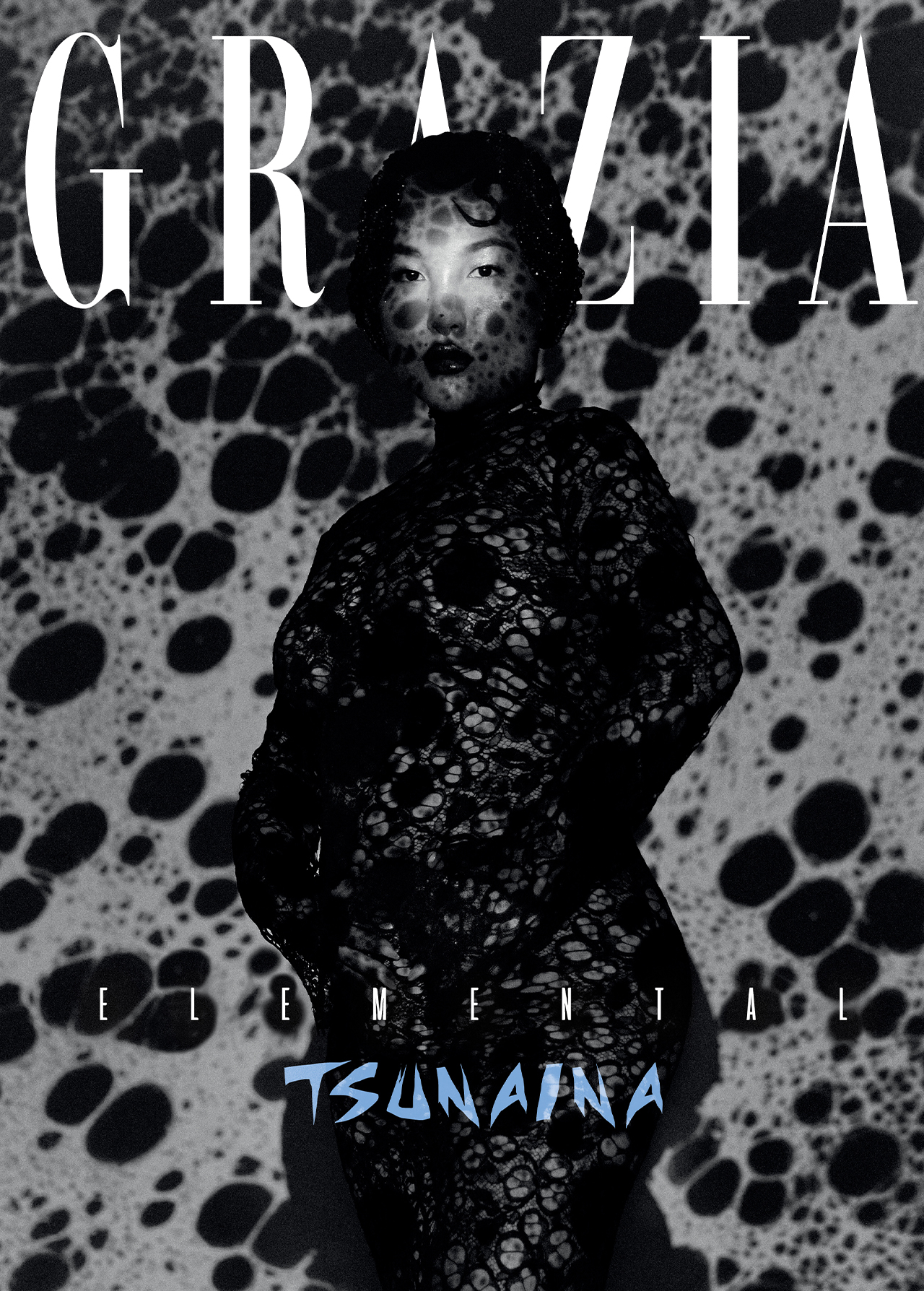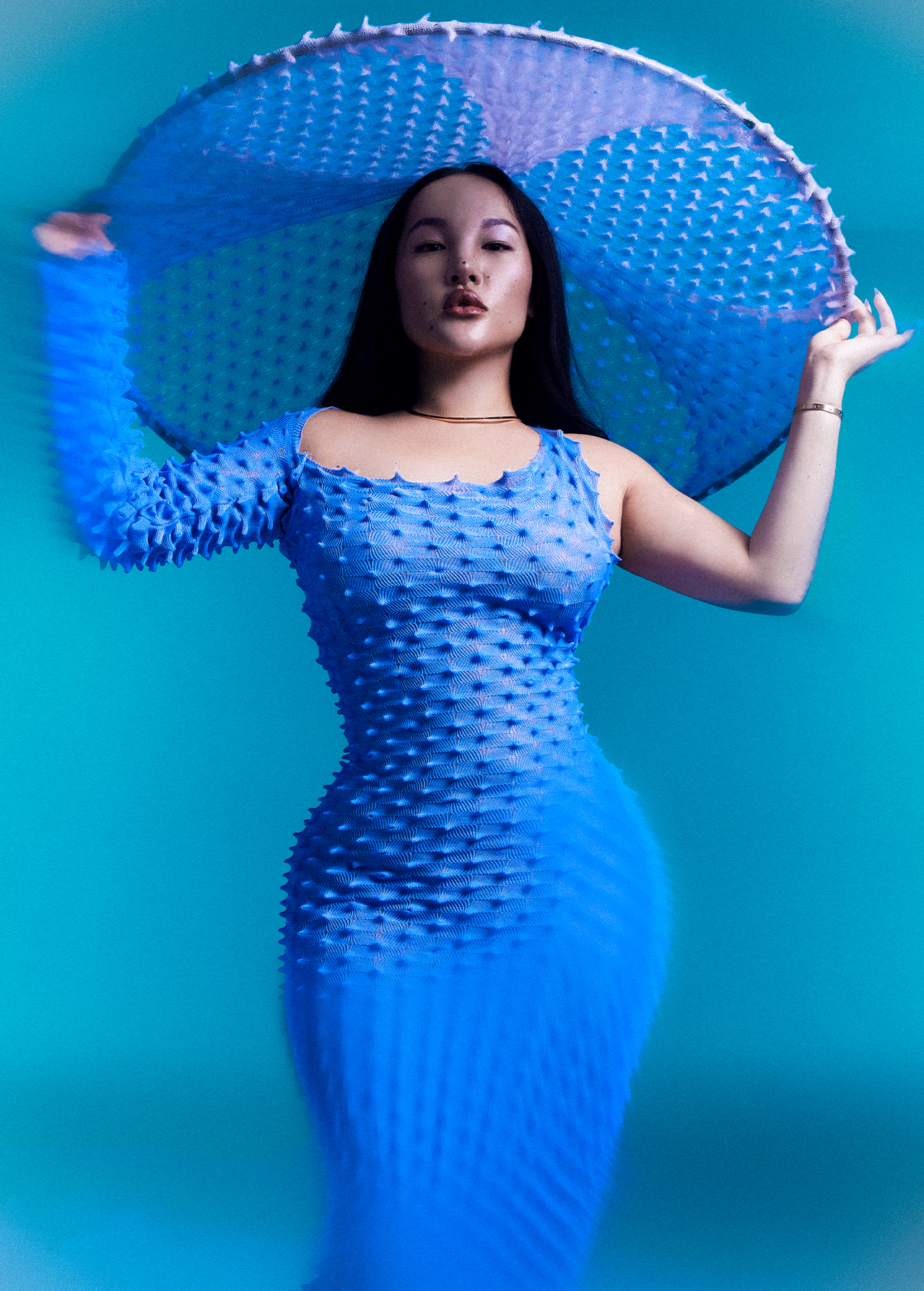News feed

Tsunaina’s beauty will stop you in your tracks, but the model-turned-multi-hyphenate was always destined to be more than her looks. Her career in modelling could be described as a pendulum swing from not seeing herself represented at all, to being able to share who she was, in all her layers, through her music.
This notion was explored through her first single “Waterways” in 2020 which Tsunaina describes as taking her “first breath of air.”
“I’d just been through years of being recognised everywhere but with no voice, no one knew what I did, what I stood for, only my face. It felt like taking a breath for the first time in terms of letting people know I wasn’t just a canvas but I had stories, emotions – big emotions – ideas,” she says. “Today I make music, tell stories, direct ideas, work with the most beautiful beloved people. I had never dreamed of these things growing up, they were so far away. I didn’t know this was possible for someone like me.”
A third-culture kid, Shunaina Limbu was born in Kowloon of Indigenous Nepalese ancestry, raised in Kathmandu, and came of age in Kent, the county known as the Garden of England. Her sound is a testament to this journey whether or not she chooses to acknowledge it.
“I wouldn’t say that the musical tradition of Nepal is ever at the forefront of my mind when I’m making music but, of course, a lot of the time I finish a song and I can hear home sometimes in my scales, in my melodies, my words.”

Echoes of Nepal resound in her music the form of traditional instruments from her homeland.
“There are a lot of live instruments in most of my songs, as well as field and found sounds,” she argues. “’Waterways’ has harp, sarangi, gamelan, none of it with a conscious effort to intellectualise anything but just because they felt right for the song. I’m singing about the journey of a lot of the women I know and grew up with, as well as myself of course, so it made sense to include the sarangi I grew up with. A lot of South Asian stringed instruments I think cut to the heart because they almost sound like human voices, so it felt right.”
“I think a lot of what I do hinges on me trying to make my internal external, whether it’s visually or sonically, the intention is to submerge the audiencee,” she adds. “These natural instruments, sometimes treated in an unorthodox way, I feel really drills in the point that these emotions get almost supernatural at times. Hearing these sounds you may have heard before but in a way that sounds slightly off or overwhelming, sounding like they shouldn’t sound.”
The gamelan – one of the instruments Tsunaina uses on “Waterways” – was added onto the Representative List of the Intangible Cultural Heritage of Humanity in 2021, making the song a form of cultural preservation and protection in itself. Is making music her way of staying connected to her ancestors? Although this isn’t an association she readily makes herself, she understands the assignment.
“I think with a lot of our first-generation immigrant parents, the pressures of survival means that really, it will be up to the second generation – us – to collate and pass down a lot of the lost heritage.”
Her voice – wild and untamed with both strength and vulnerability in every breath – sounds like it was mined from the depths of her being like a precious metal, and possesses a rawness and purity that can only come from being self-taught.
“I think having had no training is a double-edged sword,” she muses. “I do find sometimes I come with ideas I adore, that turn out to be super unconventional, and my ignorance to rules is sometimes almost exciting to collaborators, but sometimes there is barrier in communication – there’s no easy way for me to explain what I want, which is why I’ve had to now teach myself a lot of the process as so much was getting lost in translation.”
It was at this point that Tsunaina took a long hiatus to take a bachelor’s degree in Sound Arts at the University of the Arts in London where rather than classical music, she studied the diverse ways that sound is used creatively in the contemporary world across fine art, art installations and gallery practice, audio-visual communication, soundscape pieces, and experimental musical work of all genres which, with hindsight, helped shaped her into the multidisciplinary artist she is today.
“I really took the time to get to where I felt comfortable in my whole craft,” she admits. “I think now I’ve reached a good midway point where I can communicate what I want but still retain enough room to weave in and out of convention and not be constrained by it.”

“UnEarth”, the follow-up single to “Waterways”, and the songs that succeeded it – “A Dam on the Eve of Breaking”, and “Tenderer” – are all song titles that read like love letters to a broken planet, with “Fanned Out Fingers” written to sound like the wind lashing around the listener.
“I don’t think making music is really a template or straightforward process for any musician,” she refutes.
Yet what all her songs share is the same organic, free-form structure and storytelling centred on the female experience.
“I find usually that, at the beginning, my ideas come to me often in threads and I spend some time weaving them all together. Then, a few hours into the throes of it, the images and words and melodies start to pour in all at once and I have this cohesive fleshed out thing. I used to be a lot more rigid in how I made music but I think a part of evolving as an artist has been to let my mind wander and collect little bites and let it breathe. It’s helped me to make songs I feel are a lot more pure and take a lot more joy in it.
Now living in London, she credits her new surroundings with helping her to trust the process.
“London has been educational and liberating just by sheer exposure to the variety of music, approaches, and the people here,” she observes. “I feel like I used to treat music with such preciousness at one point and although that still has its place, London has really instilled in me a general openness to music being an evolving, not precious, thing that I can’t try to mould and control too much.”
Paradoxically, the medium of modelling that once made her feel powerless has become her strength when it comes to creating imagery to accompany her music. The cover art of “UnEarth” depicts Tsunaina in a pose that echoes The Birth of Venus by Botticelli, and elsewhere she’s seen in a haunting recreation of the pre-Raphaelite painting of Ophelia by John Everett Millais, the tragic heroine in Hamlet depicted singing while floating in a river just before she drowns.
“Again, it just felt right and easy to illustrate the feeling of these songs, these emotions being too big to contain in my one human body and spilling into the landscape,” she explains. “Part of this I’m sure is because of my upbringing where I spent a lot of time in nature and it felt organic to go back to that. Studio imagery is easier to control a lot of the time but I was just in a moment in my life post-modelling where I wanted nothing sterile, nothing too pretty.”

By blurring the borders between fashion and music, Tsunaina has finally found her peace and her place in the fashion world. “Earthrise” is a song she penned for Iris Van Herpen’s Fall/Winter 2021 collection, also starring in a video shot in the snow-covered Dolomites; she composed the music and starred in a McQ campaign; and earlier this year she created the soundtrack for Robert Wun’s first-ever haute couture show in Paris.
“It’s quite exciting whenever I collaborate on music with someone else, especially if the music is intended for their vision, as I find it allows me to almost detach a little mentally and venture into arenas I don’t think to naturally,” she reveals. “Of course, the other party already knows what my sound and aesthetic is but they have their own ideas of what they want, their own ideas of my music sometimes, and it often feels like a little break from the pressures I put on myself for my own music because they have set goals. I think sometimes when you’re working for yourself, most of the time the echo chamber of one can be a little daunting and you can find yourself in circles, but when there is an outside collaborator, the efficiency and objectivity is like a good hard reset.”
Now Tsunaina is equally adored for her music as her captivating catwalk presence, if not more so, has a new projection – one of a “spellbinding goddess” – replaced the notion of a canvas she was so desperately trying to escape?
“I think it’s difficult sometimes being a public personality and figuring out where you end and where people’s perceptions of you begin. Sometimes these words and descriptions feel intense and I think, ‘But I’m just a girl writing about how I feel?’”
Endlessly indefinable, she remains characteristically grounded about being labelled by others.
“I’m very thankful that I have been doing this long enough now that I can comfortably accept that no one’s description of me is final,” she smiles. “At the same time, I can’t swat down these descriptions because they are a facet of who I am at those points when I am making certain songs and I feel like what’s inside is bigger than the parts of me.”
She may not believe in divination – “I think because I grew up in a culture with a lot of superstition, I don’t pay much attention to it in adulthood,” she shrugs – but with time, Tsunaina will realise she held the power to express her spirit all along.
SEE GRAZIA’s FULL PHOTO SHOOT HERE.
CREATIVE DIRECTION: DANÉ STOJANOVIC
PHOTOGRAPHY: JACK WATERLOT
FASHION DIRECTION: ANNA CASTAN
HAIR: DANIEL DYER
MAKEUP: NEIL YOUNG
MANICURE: AMI RAI
EXECUTIVE PRODUCER: JEAN-MARC MONDELET
FASHION ASSISTANTS: CHRISTIAN MARCHESICH & ANNIKA MENSHYKOVA
TALENT: TSUNAINA
THIS FEATURE IS PUBLISHED IN THE 15TH EDITION OF GRAZIA INTERNATIONAL. ORDER YOUR COPY HERE.
TOP BANNER IMAGE: LONG DRESS WITH ASYMMETRICAL FRONT OPENING IN GREY SILK, VISCOSE KNIT, AND A MIX OF RIBBED KNIT INSERTS, FENDI, SHOP NOW. CLASH EARRINGS, SHOP NOW, TRINITY NECKLACE, SHOP THE COLLECTION, CARTIER










